Thesis Background
In laying the foundation of urban acupuncture, architect and social theorist Marco Casagrande described the city as “a multi-dimensional, energetic and sensory organism, a living ecosystem”, on which we can propose almost surgical operations that correspond to what we know as urban acupuncture interventions.
Healing Acupuncture looks beyond correcting only the urban deficiencies detected in the territory by understanding the chi of the city as a collective energy flow network. The thesis question the conventional western healthcare system whereby healthcare provision is exclusively confined within depressing medical facilities which are alienated from the population, leaving the population vulnerable to uncertainties.
A Health-generating Neighbourhood Model
If multi storey carparks as the blocked acupoints can be unleashed and serve as the soil for the flourish of a healing interface for sensorial stimulation and healthcare service delegation, then the salutogenic lifestyle will root into the neighbourhood, generates healing sparks in the city organism. Healing Acupuncture aims to activate and transform this most deserted space in neighbourhoods into healing hubs that forms healthy urban network in the city. Different medical functions are assigned to architecture elements of Healing Acupoint, Active Meridian, Health Capillary and Medical Vessel, to achieve the flowing impact of healthful lifestyle and work in synergy with the healing environment.
In order to ground resilience to a neighbourhood, the essential subsystems such as the treatment system, isolation system, prevention system, transportation support system and industrial support system need to function collectively as an organic body. The site will be a testing ground for such a model for its proximity to the newly built Kallang Polyclinic and public transportation nodes and its relatively aged population base. Healthcare provision in this model is a seamless experience instead of a process of steps. This is achieved by leading residents through a healthful lifestyle in passive spatial interests encounters in the five typologies.
A neighbourhood of HEALING ACUPUNCTURE is also an organism with responsive public spaces. With the synchronous analysis of residents’ interactions with their surroundings, the environment feedbacks and responds to the results accordingly. The station is placed in public areas and records information including physical dimensions such as height, weight and BMI, cardiovascular factors like blood pressure and rate of the pulse, body composition analysis for body fat percentage, mineral content, muscle strength, bone strength and body water content. Going beyond recording relevant data, the responsive environment in future neighbourhoods embraces the potential to work seamlessly with wearable devices, and hence create customized public space for individuals.
Conclusion
The fractal design integrates healing mechanisms into daily activities, de-institutionalizes healthcare and extends health-generating process into other activities which strengthen social resilience in a neighbourhood such as urban farming, alternative working and recreational sports. With the increasing proportion of workforce moving away from offices in CBD back to homes, Whampoa can become a gateway from the centre of healthcare, business and entertainment transitioning into the residential neighbourhoods in the north, and hence a testing ground for future adaptation of similar models. With the passive contact with healthful environment, the residents will eventually become an active participant in healthful living ecology.
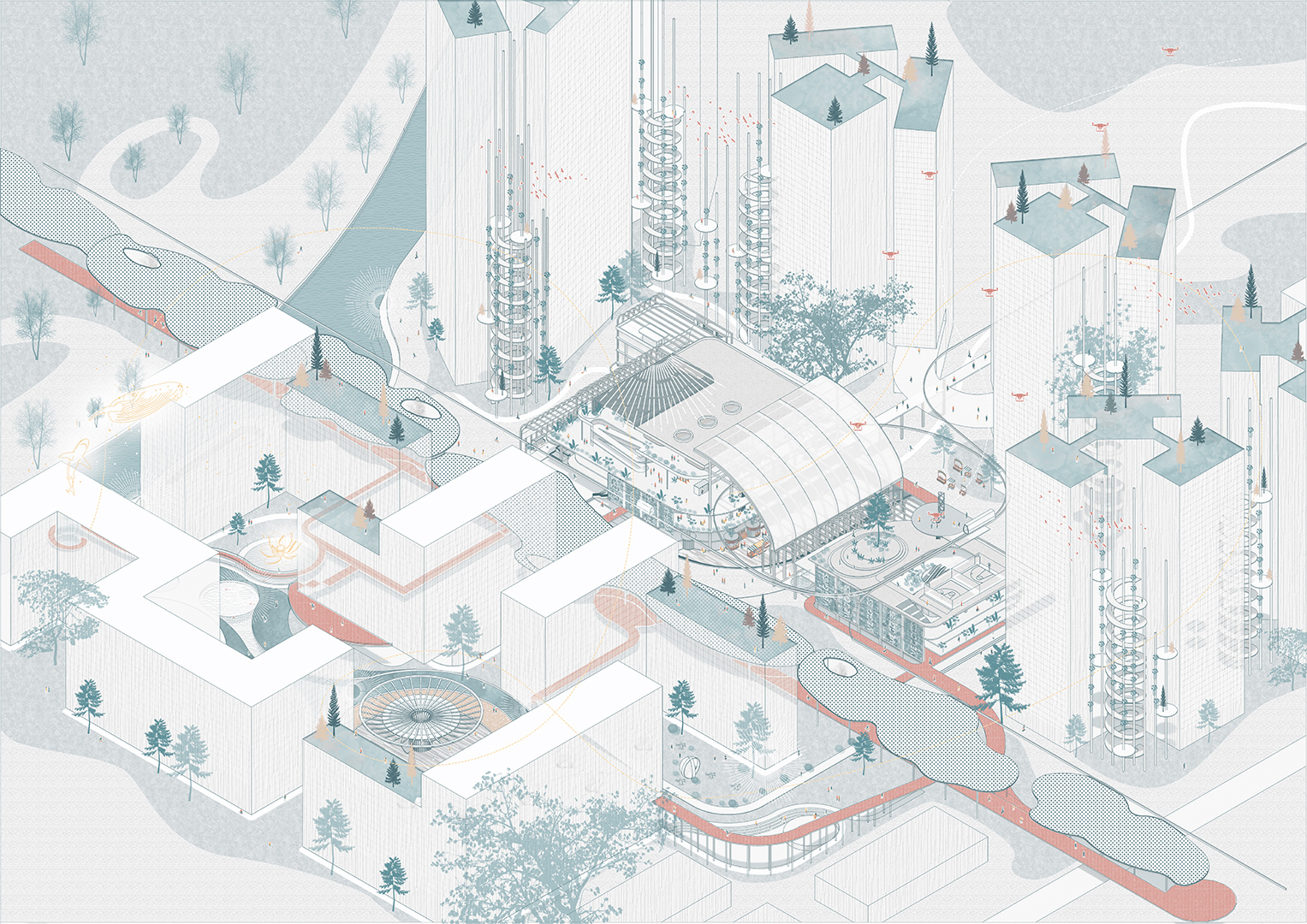

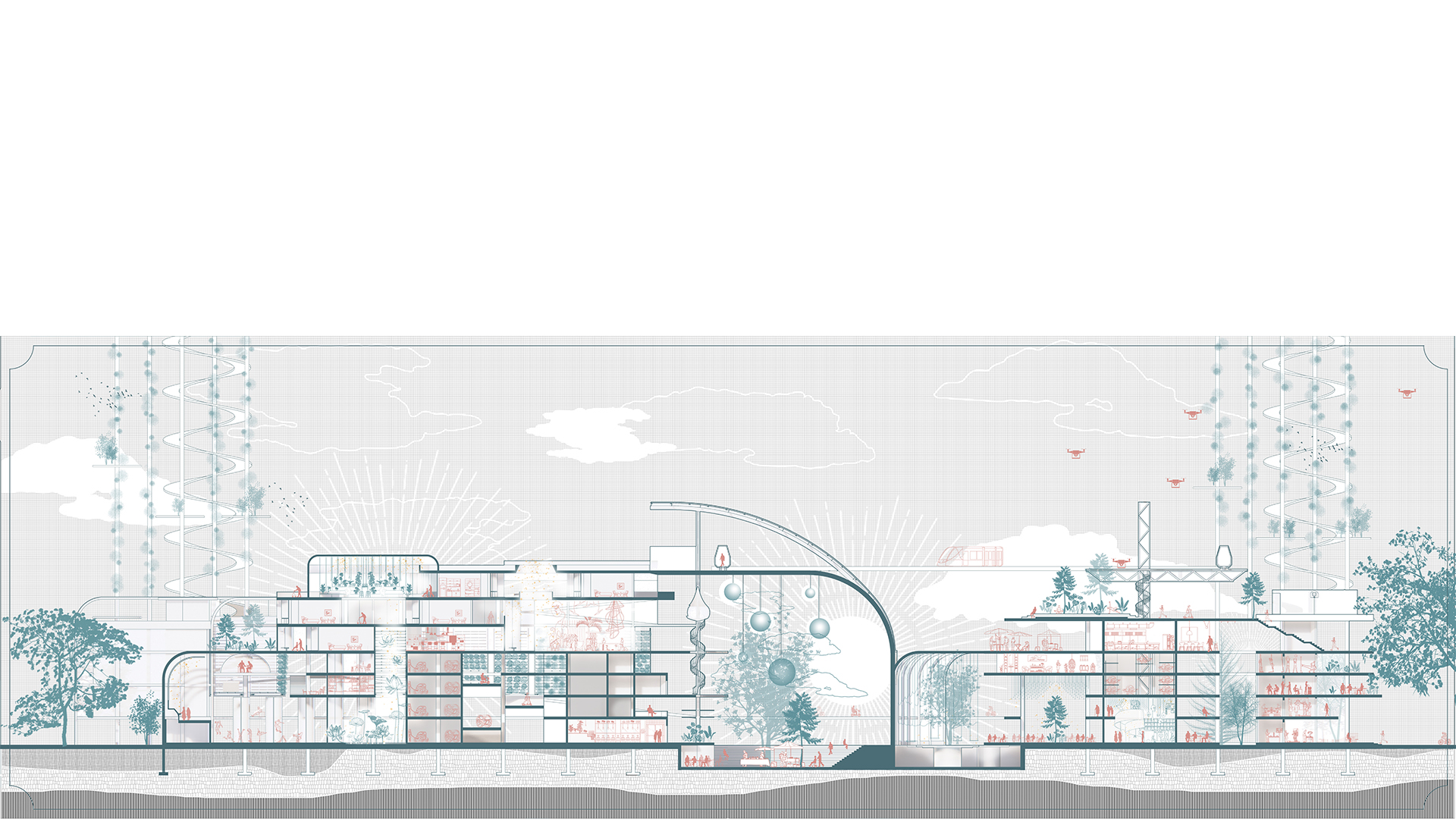
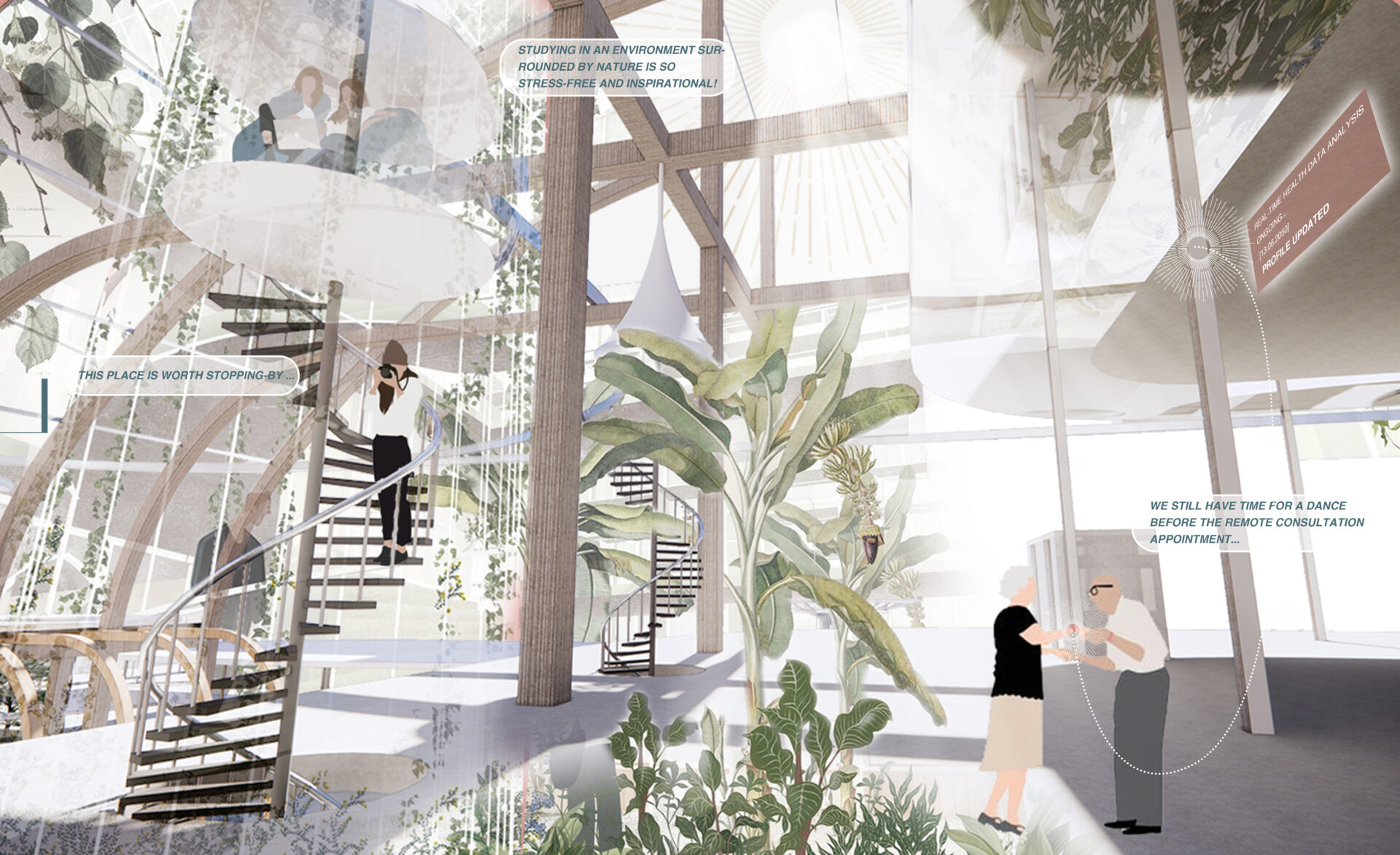
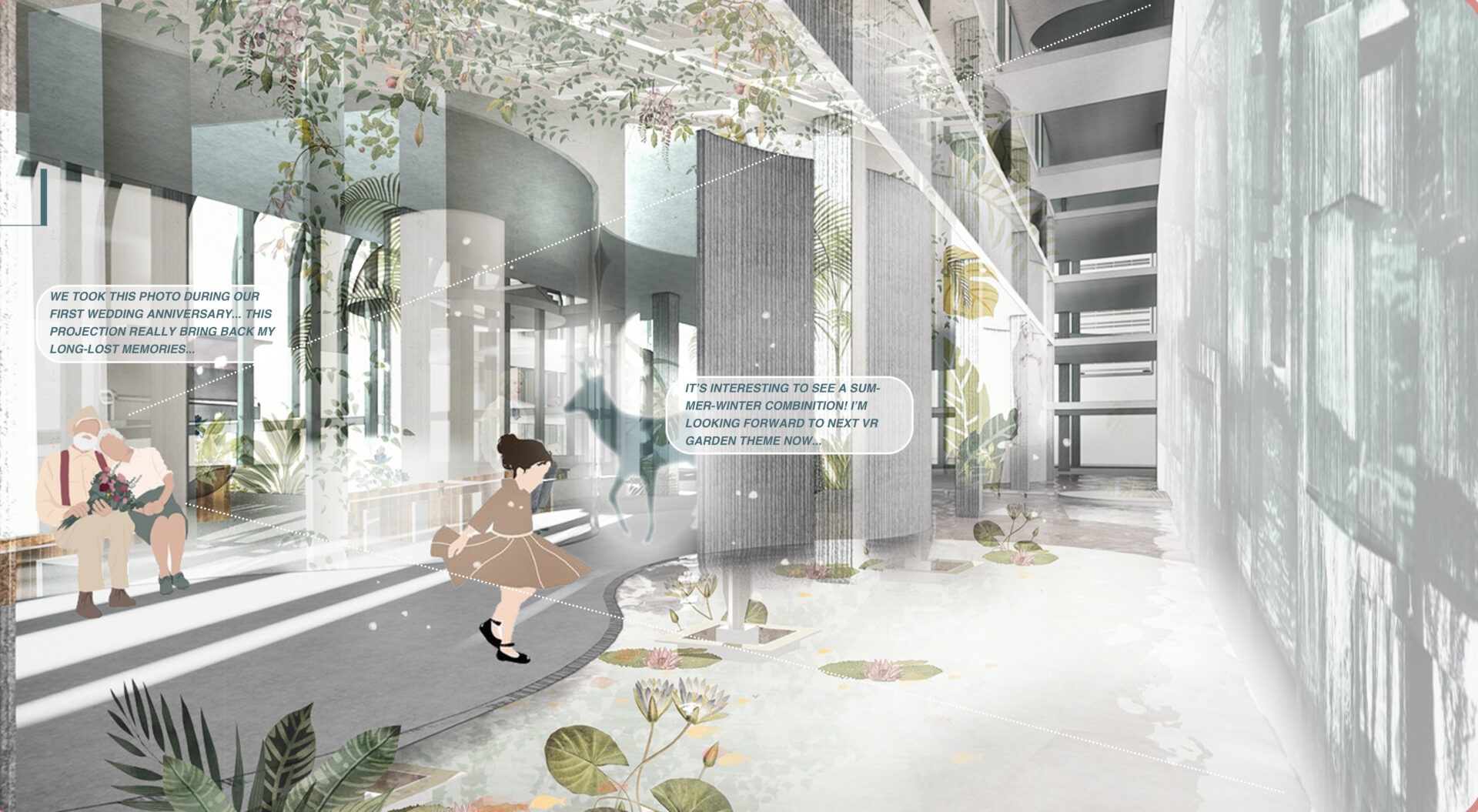
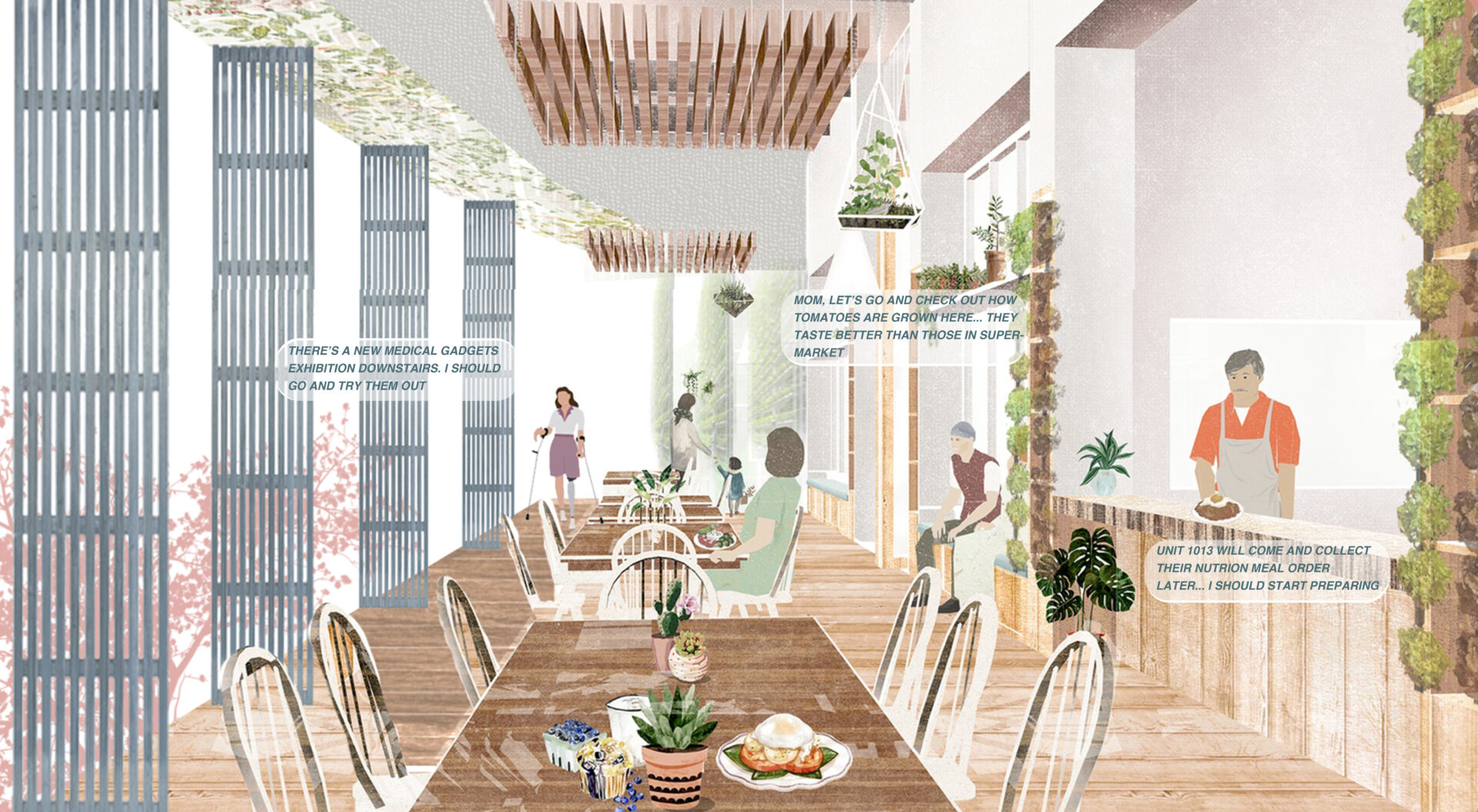
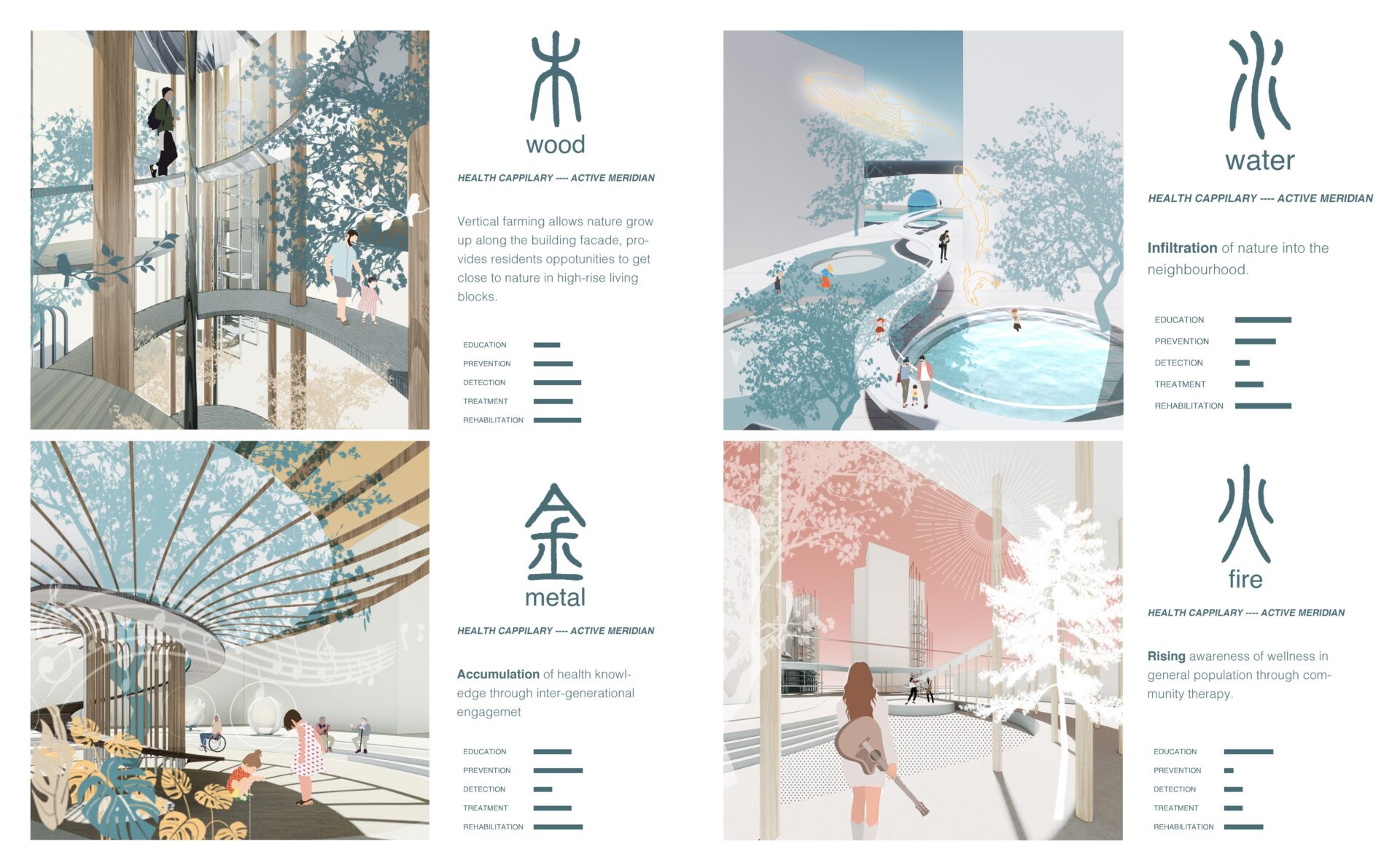
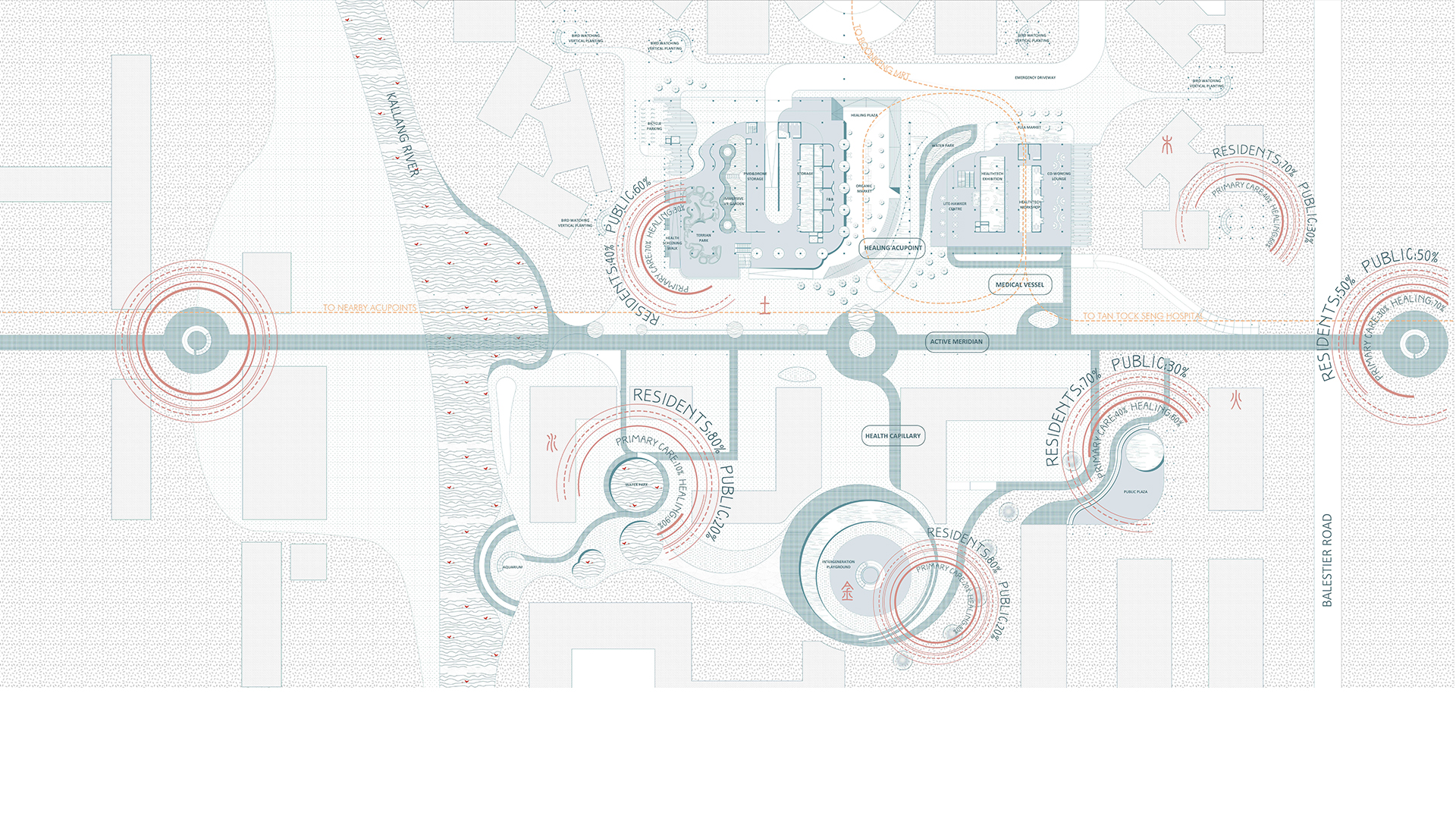
Supervisor's comments:
The thesis project ”Healing Acupuncture” is investigating the possibility of health-generating neighbourhoods as response to the looming aging crisis. Healing acupuncture as method for urban redefinition and regeneration, looks beyond correcting the urban deficiencies detected in the territory and establishes understanding of the chi of the city as a collective energy flow network. The proposed new paradigm of salutogenic neighbourhood model is to provide a living space with integrated primary healthcare services and to empower residents to attain stewardship in wellness. Multi storey carpark detected as one of the “blocked acupoints” is redefined as healing interface for healthcare services, sensorial stimulation and salutogenic lifestyle thus generating healing sparks in the city organism.
- Assoc. Prof. Ruzica Bozovic Stamenovic (Dr.)